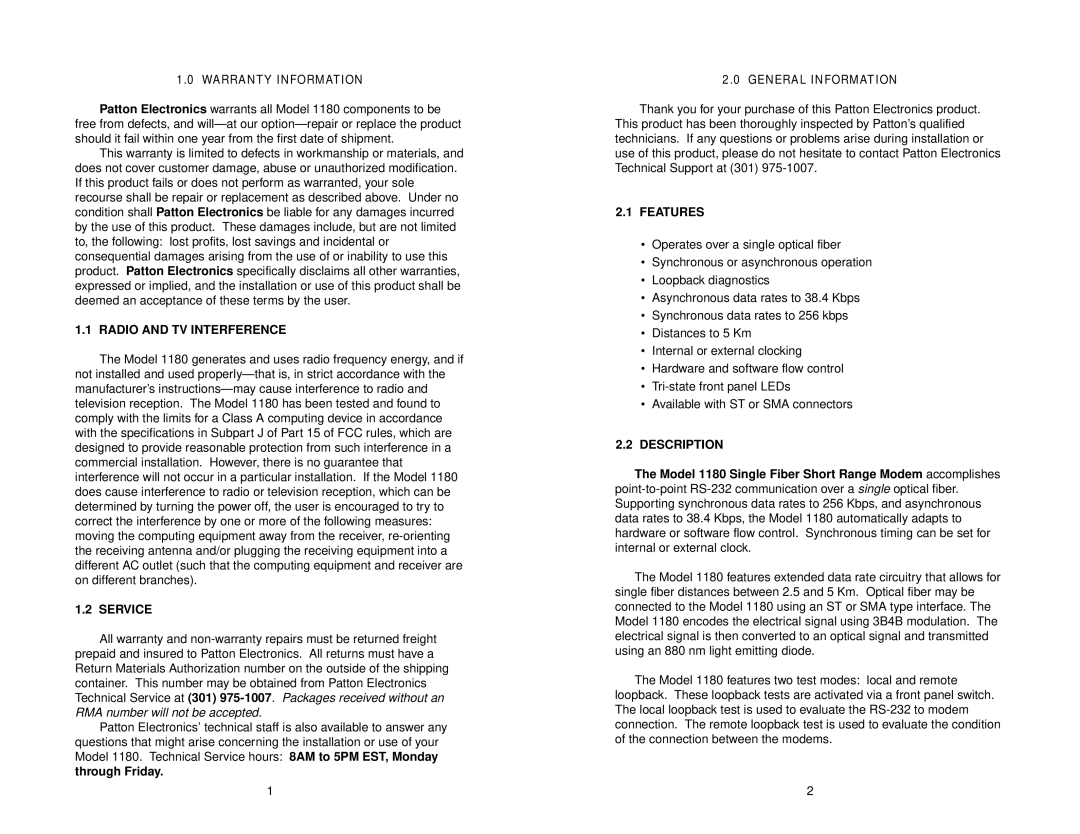1.0 WARRANTY INFORMATION
Patton Electronics warrants all Model 1180 components to be free from defects, and
This warranty is limited to defects in workmanship or materials, and does not cover customer damage, abuse or unauthorized modification. If this product fails or does not perform as warranted, your sole recourse shall be repair or replacement as described above. Under no condition shall Patton Electronics be liable for any damages incurred by the use of this product. These damages include, but are not limited to, the following: lost profits, lost savings and incidental or consequential damages arising from the use of or inability to use this product. Patton Electronics specifically disclaims all other warranties, expressed or implied, and the installation or use of this product shall be deemed an acceptance of these terms by the user.
1.1 RADIO AND TV INTERFERENCE
The Model 1180 generates and uses radio frequency energy, and if not installed and used
1.2 SERVICE
All warranty and
Patton Electronics’ technical staff is also available to answer any questions that might arise concerning the installation or use of your Model 1180. Technical Service hours: 8AM to 5PM EST, Monday through Friday.
1
2.0 GENERAL INFORMATION
Thank you for your purchase of this Patton Electronics product. This product has been thoroughly inspected by Patton’s qualified technicians. If any questions or problems arise during installation or use of this product, please do not hesitate to contact Patton Electronics Technical Support at (301)
2.1FEATURES
•Operates over a single optical fiber
•Synchronous or asynchronous operation
•Loopback diagnostics
•Asynchronous data rates to 38.4 Kbps
•Synchronous data rates to 256 kbps
•Distances to 5 Km
•Internal or external clocking
•Hardware and software flow control
•
•Available with ST or SMA connectors
2.2DESCRIPTION
The Model 1180 Single Fiber Short Range Modem accomplishes
The Model 1180 features extended data rate circuitry that allows for single fiber distances between 2.5 and 5 Km. Optical fiber may be connected to the Model 1180 using an ST or SMA type interface. The Model 1180 encodes the electrical signal using 3B4B modulation. The electrical signal is then converted to an optical signal and transmitted using an 880 nm light emitting diode.
The Model 1180 features two test modes: local and remote loopback. These loopback tests are activated via a front panel switch. The local loopback test is used to evaluate the
2
